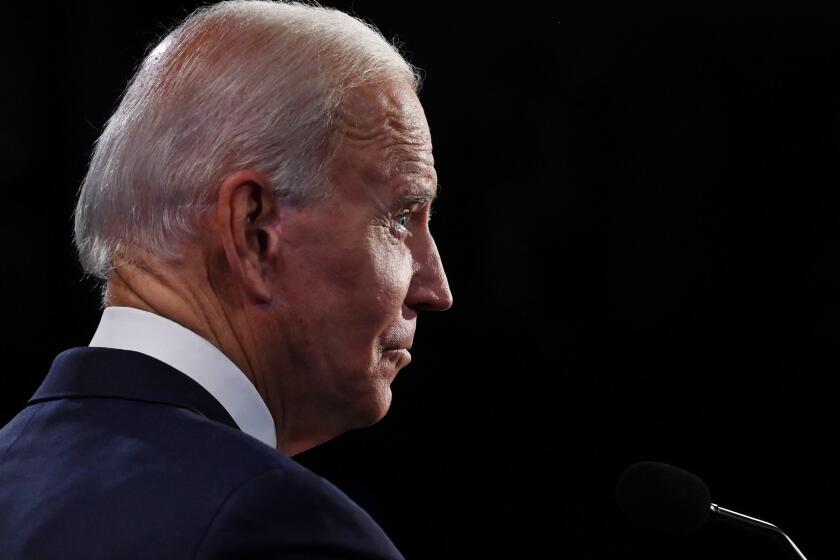Officials Say Japanese Gangs Play Key Role in Bad-Loan Crisis : Banking: As a result, Finance Ministry announces the formation of RTC-type of agency to collect outstanding debt.
Japan’s Ministry of Finance acknowledged Wednesday that gangsters play an important role in delaying a solution to the country’s bad-loan crisis and said that it will create a new institution to combat them.
Key to the new effort, the ministry announced, will be the creation of one or possibly two institutions somewhat similar to the U.S. Resolution Trust Corp., which was established in 1989 to deal with the U.S. savings and loan crisis.
The “Japanese RTC” would be able to confiscate and sell off collateral for non-performing loans--a task that under current Japanese law is difficult and sometimes dangerous for banks to attempt on their own.
“There are many real estate corporations who still survive [but] don’t service their debt,” Sei Nakai, deputy director of the ministry’s banking bureau, said at a news conference called to explain the new policy. “Some corporations are affiliates of Japanese mafia . . . . We need some legal power to collect the money from those corporations.”
Public opinion “is becoming very strong . . . about this issue,” Nakai added. “I cannot guess how much we could collect. But we have to make the utmost effort, anyway. Otherwise the Japanese public wouldn’t support any injection of public money to [solve] this [bad-loan] problem.”
Wednesday’s announcements were linked to the release of a liquidation plan for the bankrupt Kizu Credit Union, which failed in August. Kizu’s operations will be transferred to the Japanese RTC immediately after its creation, Finance Minister Masayoshi Takemura said.
While the ministry had initially estimated Kizu’s unrecoverable loans at about $6 billion, Takemura said Wednesday that the figure had now been determined to be about $9.6 billion. Criminal charges may be filed against the credit union’s former managers, he added.
The Ministry of Finance estimated earlier this month that Japanese banks are now carrying about $370 billion in non-performing loans, of which $250 billion will be uncollectible. Most of the remaining $120 billion is the value of collateral, primarily real estate.
No reliable statistics are available on what portion of bad loans were made to firms affiliated with or controlled by gangsters, or yakuza .
But the Japanese public has long been convinced that, along with the collapse of real estate prices after the speculative boom of the late 1980s, corrupt real estate firms--and toleration of their activities by financial institutions--played a major role in the bad-loan crisis.
This is a key reason public opinion is strongly opposed to use of public funds for a banking system bailout, even though many experts both inside and outside of the government say the use of taxpayer funds is inevitable--and would help put Japan’s economy on a firmer path toward recovery.
According to the plan announced Wednesday by the Finance Ministry, the Tokyo Kyodo Bank, created in March to take over operation of two bankrupt credit unions, will be restructured next year as a “temporary resolution corporation” to “assume the disposal operations of failed financial institutions, to repay deposits and collect loans and thus to liquidate the institutions.”
The Japanese RTC will be created after passage by Parliament of a bill strengthening Japan’s Deposit Insurance System, and would have a life of five years, Takemura said. A second, similar institution may be created to deal separately with bankrupt housing finance companies, Nakai said.
Asahi Shimbun, a leading Japanese newspaper, reported Wednesday that the Finance Ministry and Bank of Japan would seek the support of the police and the Justice Ministry in dealing with the bad-loan problem because “people with gangster affiliations were blocking the sale of collateral” and debt collectors were sometimes threatened by borrowers.
Evidence for yakuza involvement in the bad-loan problem includes the gangland-style murder last year of Sumitomo Bank’s Nagoya branch manager, Kazufumi Hatanaka, who was shot in the head outside his condominium, and the stabbing death in 1993 of Tomosaburo Koyama, a vice president of Hanwa Bank.
Koyama was in charge of collecting bad debts. Hatanaka was also reported to have had trouble collecting loans from borrowers.
Nakai cited both cases Wednesday when explaining why a tougher law is needed to recover collateral from borrowers who have defaulted on their loans.
Gangsters also give banks trouble in less deadly ways, Nakai added. One method involves exploiting Japanese laws that give tenants extremely strong protection against eviction.
“Once a corporation goes bankrupt and completes legal bankruptcy procedure, sometimes a third party jumps in this problem to get some money,” Nakai said.
“For example, the Japanese mafia get into a building [owned by] a company that goes bankrupt and start living there as residents. To liquidate this collateral, banks are asked by those people to pay some money to get them out. So this kind of problem delays the liquidation of the collateral. Now the banks are making a great effort to solve this problem. But in Japan it takes time.”
More to Read
Sign up for Essential California
The most important California stories and recommendations in your inbox every morning.
You may occasionally receive promotional content from the Los Angeles Times.






